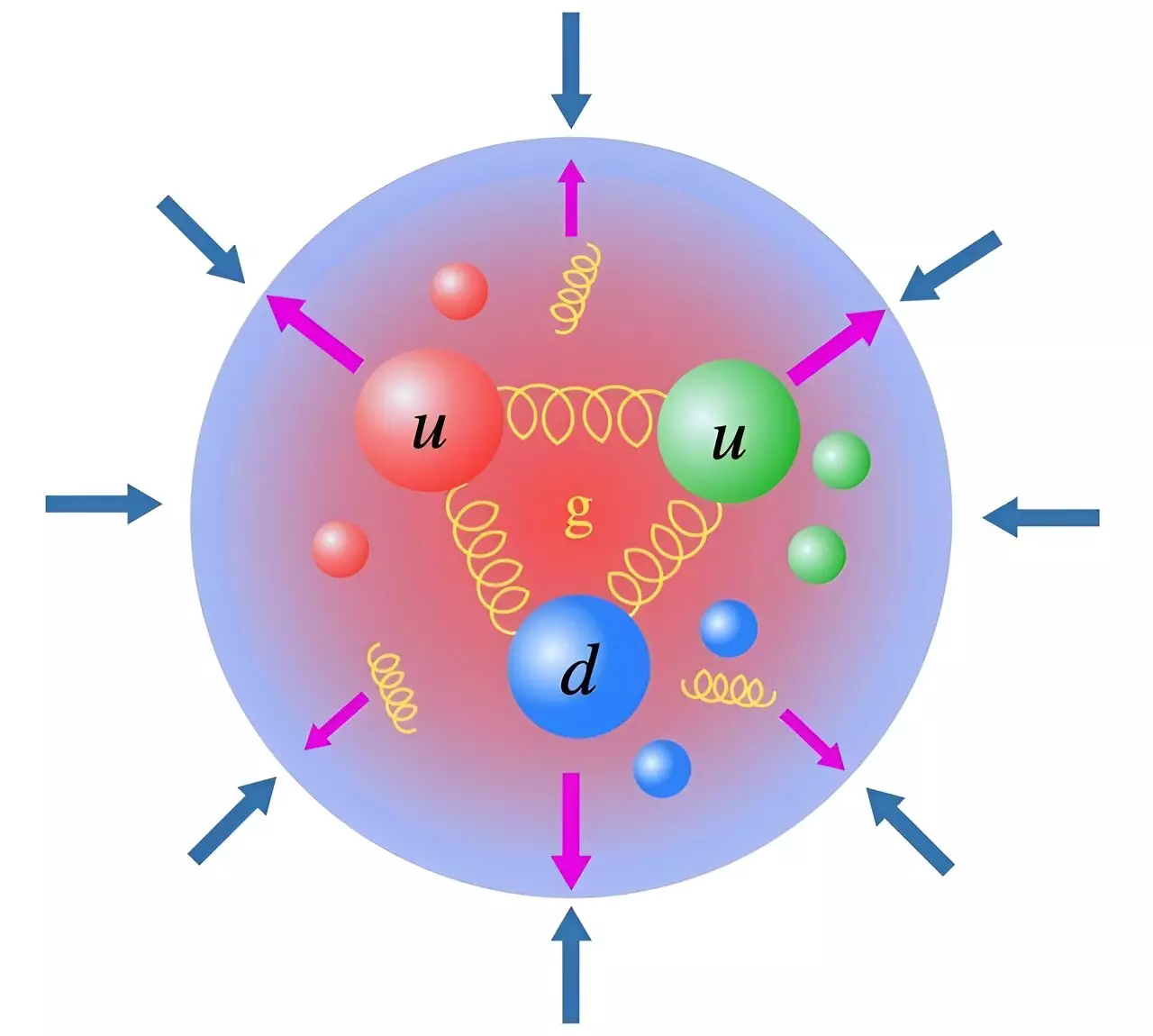Quantum chromodynamics (QCD) serves as the foundational framework for investigating the internal forces within atomic nuclei, including protons and neutrons. A vital aspect of QCD research centers around examining how quarks and gluons are confined within nucleons. While mathematically, these internal forces can be likened to gravity, the presence of quantum effects such as the “trace anomaly” introduces a unique complexity that deviates from traditional patterns within nucleons.
Recent studies have demonstrated a novel method of quantifying the trace anomaly through the production of charmonium, a subatomic particle generated at prominent research facilities like the Thomas Jefferson National Laboratory and the Electron Ion Collider. By utilizing experimental data from charmonium production alongside theoretical calculations derived from QCD, researchers can gain valuable insights into the distribution of mass and pressure within hadrons, which are composite particles composed of quarks and gluons.
In the realm of both hadrons and superconductors, the confinement of particles within a specific volume can be articulated using similar mathematical frameworks. This parallel extends to the cosmological constant and dark energy in the context of energy and pressure within equations that describe the expansion and acceleration of the universe. By exploring these interconnected themes across various physical systems, ranging from microscopic particles to cosmic scales, physicists can cultivate a comprehensive understanding of diverse phenomena in the field.
By conducting experimental measurements and computational analyses to evaluate the trace anomaly, researchers gain direct access to unraveling the intricate dynamics of quantum chromodynamics. This multifaceted approach not only facilitates a deeper comprehension of the forces at play within nucleons but also exemplifies the broader implications of energy, pressure, and confinement that transcend different scales within the physical universe.
The study of quantum chromodynamics represents a pivotal avenue for delving into the fundamental structures of atomic nuclei, elucidating the intricate interplay between quarks, gluons, and the internal forces within nucleons. Through a cohesive integration of experimental observations, theoretical calculations, and mathematical frameworks, researchers can unlock profound insights into the dynamics of energy, pressure, and confinement across diverse physical systems, fostering a unified understanding of phenomena in the expansive domain of physics.


Leave a Reply